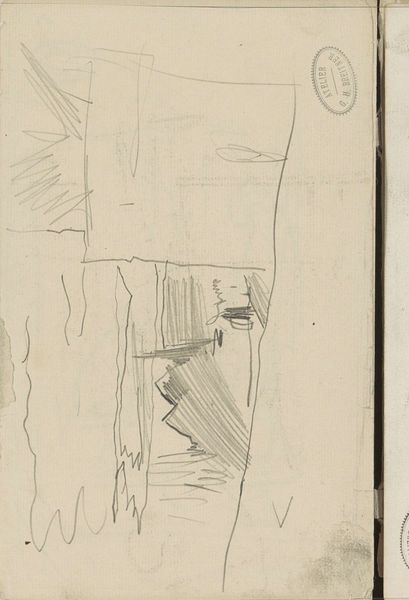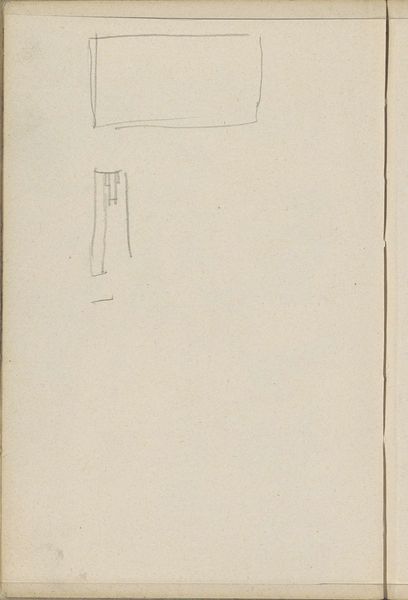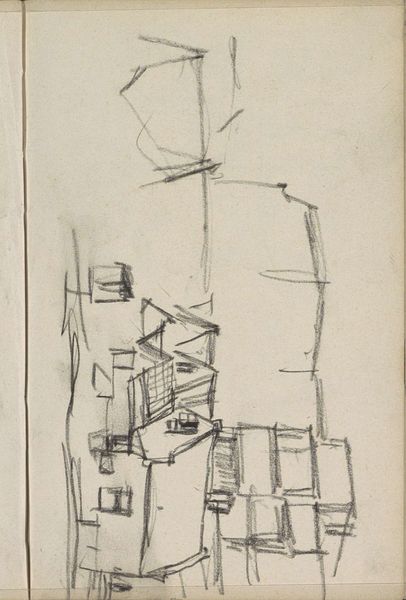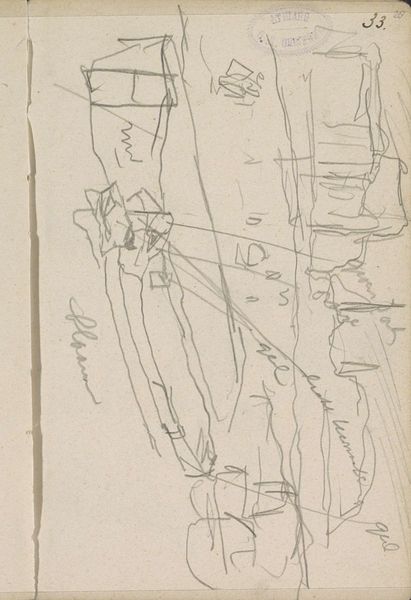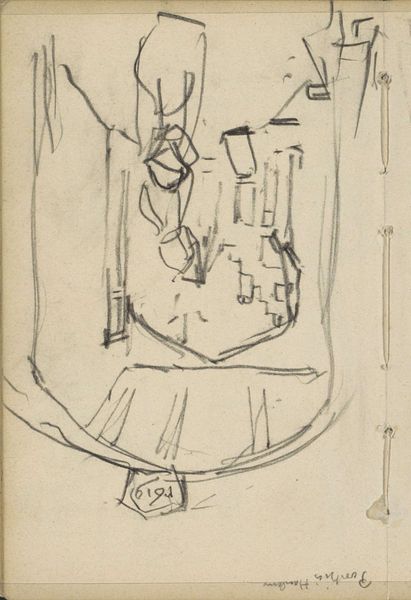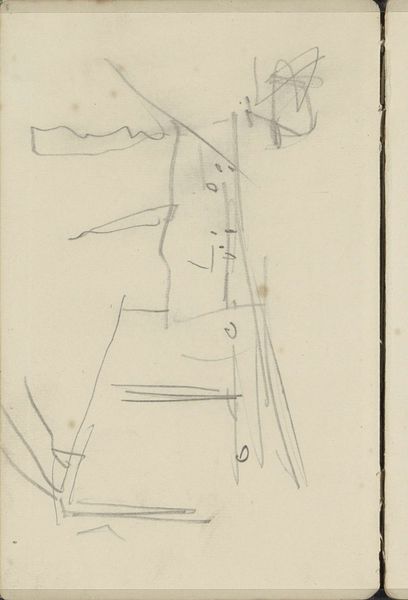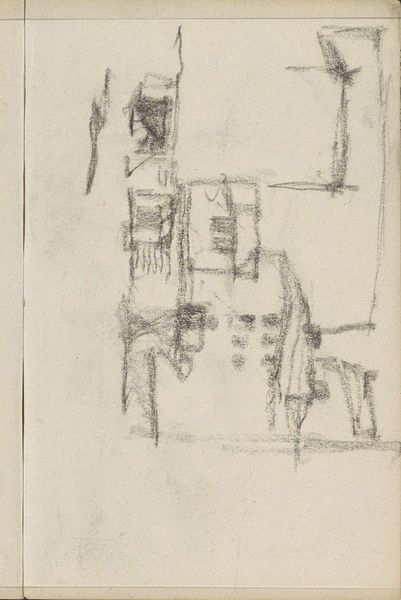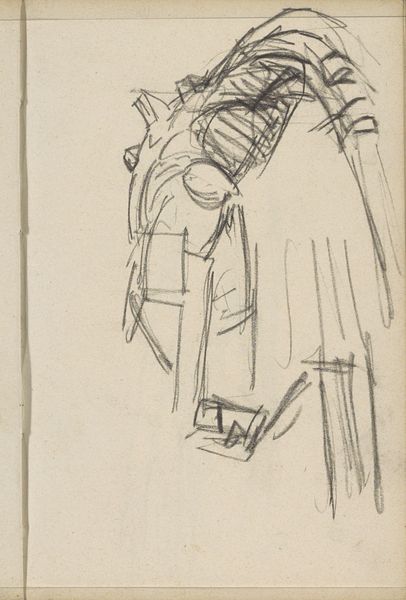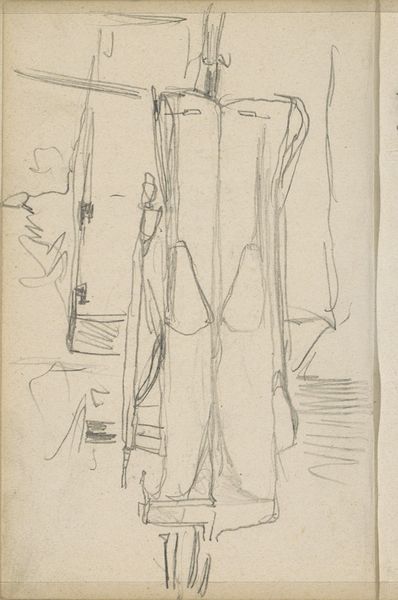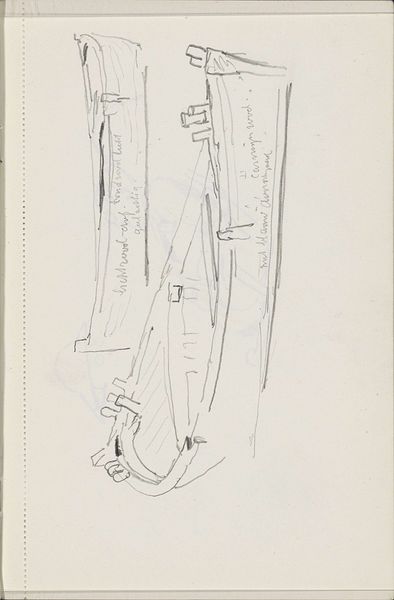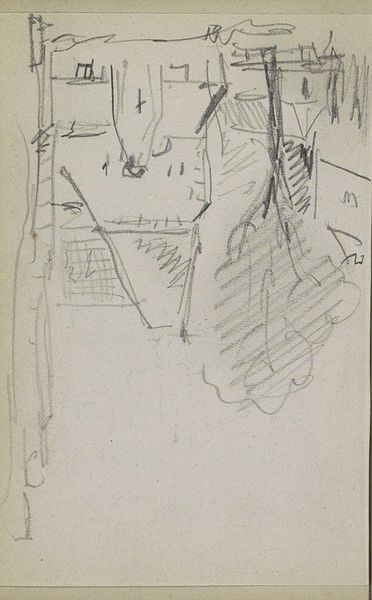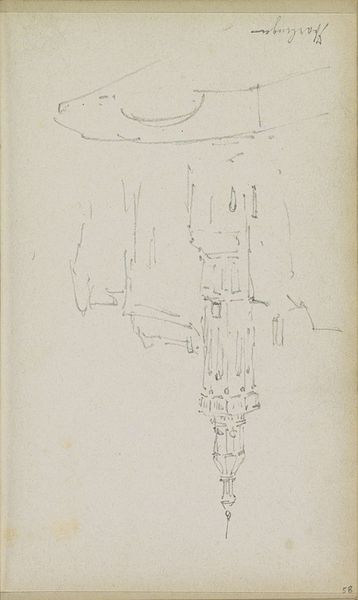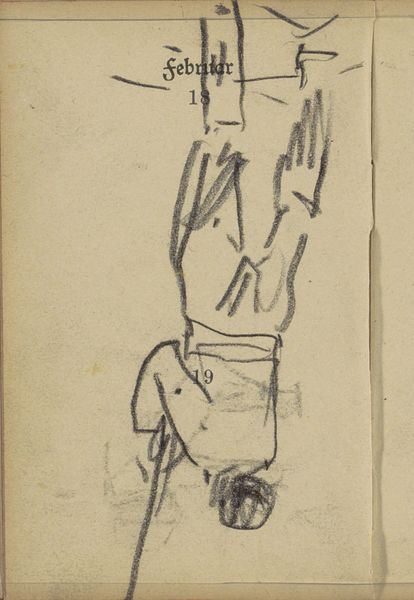
Gezicht op gebouwen en een kerk, mogelijk de Nieuwe Kerk te Amsterdam 1914 - 1923
0:00
0:00
Copyright: Rijks Museum: Open Domain
Editor: This sketch, "Gezicht op gebouwen en een kerk, mogelijk de Nieuwe Kerk te Amsterdam," by George Hendrik Breitner, done between 1914 and 1923, is surprisingly stark for a cityscape, almost skeletal. What layers of meaning do you see within its spare lines? Curator: The sketch invites contemplation on memory itself. Breitner’s deliberate omissions—the lack of vibrant detail, the bare suggestion of form—speak volumes. What does the skeletal depiction of the church signify to you? Is it a monument to faith, perhaps weathered by time? Consider the cultural memory embedded in such structures, how these landmarks, particularly churches, carry the collective history of a city. Editor: That's insightful. It feels almost as if Breitner is capturing the essence of the Nieuwe Kerk, not its precise form, but the impression it leaves, like a fleeting glimpse. The negative space is almost as important as the lines themselves. Curator: Exactly! The negative space amplifies the emotional resonance. It prompts us to recall Amsterdam, perhaps to fill in the missing details from our own cultural archive. Does this approach influence your perception of Breitner’s cityscape in any way? The sketchiness captures an elusive truth. What aspects does he deliberately leave out and what symbolic impact do you think that that achieves? Editor: It makes the scene feel less solid, more ephemeral. I'm used to thinking of cityscapes as grounded, but this feels dreamlike, transient even. This artwork prompts me to consider the city as a collection of memories that we impose meaning upon. Curator: Precisely. And that shared, shifting narrative is what grants places such as Amsterdam and Nieuwe Kerk their symbolic weight. Thank you. Editor: Thank you. I will never look at an urban sketch the same way!
Comments
No comments
Be the first to comment and join the conversation on the ultimate creative platform.
